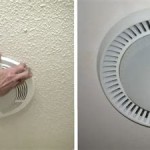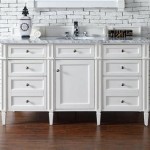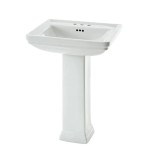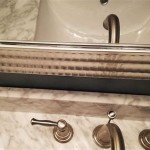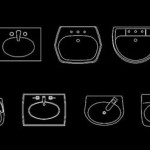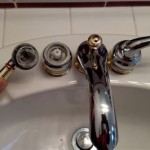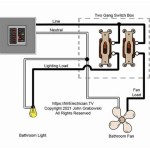Is There Any Difference Between Kitchen And Bathroom Paint?
Homeowners often face the dilemma of choosing the right paint for their kitchen and bathroom. While standard paint might seem sufficient, these high-moisture areas present unique challenges that necessitate specialized formulations. This article explores the key differences between kitchen and bathroom paints and the factors to consider when selecting the appropriate product.
The primary distinction between kitchen and bathroom paint and standard interior paint lies in their resistance to moisture and mildew. Kitchens and bathrooms experience significantly higher humidity levels than other rooms in the house. This increased moisture creates an environment conducive to mildew growth, potentially leading to unsightly stains and unpleasant odors. Consequently, paints designed for these spaces incorporate specific additives to combat these issues.
Bathroom paint, often marketed as "mildew-resistant" or "moisture-resistant," contains powerful mildewcide additives. These additives inhibit the growth of mildew on the painted surface, preserving the paint's integrity and aesthetic appeal. They offer a crucial layer of protection against the persistent threat of mildew in consistently damp environments.
Kitchen paint, while also formulated to withstand moisture, prioritizes durability and cleanability. Kitchens are prone to grease splatters, food stains, and general grime. Kitchen paints often feature a higher sheen, typically satin or semi-gloss, which allows for easier wiping and cleaning. This enhanced durability ensures the paint can withstand frequent scrubbing without losing its color or finish.
While both bathroom and kitchen paints offer moisture resistance, the degree of resistance can vary. Some manufacturers offer paints specifically designed for high-moisture areas, providing superior protection against extreme humidity and condensation. These premium paints are often formulated with advanced polymers that create a tighter, more impervious film, effectively repelling moisture and preventing it from penetrating the painted surface.
Beyond mildew and moisture resistance, other factors influence paint selection. VOC content is a crucial consideration for environmentally conscious homeowners. VOCs, or Volatile Organic Compounds, are chemicals released into the air as the paint dries. They can contribute to indoor air pollution and pose health risks. Low-VOC or zero-VOC paints are available for both kitchens and bathrooms, minimizing these potential hazards.
Sheen is another important factor. As mentioned previously, higher sheen paints are more durable and easier to clean. However, they also tend to highlight imperfections in the wall surface. Matte or flat finishes are less likely to reveal flaws but are more challenging to clean. Eggshell and satin finishes offer a compromise between cleanability and hiding imperfections.
Color selection plays a significant role in the overall aesthetic of the room. Lighter colors tend to make smaller rooms appear larger and brighter, while darker colors create a more intimate atmosphere. Consider the existing décor and lighting when choosing a paint color. Testing paint samples on the wall before committing to a color is always recommended.
Primer choice is crucial for achieving a professional-looking finish and ensuring paint adhesion. Using a primer specifically designed for the chosen paint type is essential. Moisture-resistant primers are recommended for both kitchens and bathrooms to further enhance protection against moisture damage.
Proper surface preparation is paramount for achieving optimal paint adhesion and durability. Thoroughly cleaning the walls and removing any loose or flaking paint is essential. Patching any holes or cracks with spackle and sanding the surface smooth ensures a uniform finish.
Applying the paint correctly is equally important. Using the appropriate brushes, rollers, or spray equipment for the chosen paint type ensures even coverage and minimizes streaks. Applying multiple thin coats, allowing each coat to dry completely before applying the next, yields a more durable and professional-looking result.
Ventilation is critical during and after painting. Proper ventilation helps to dissipate VOCs and accelerate drying time. Opening windows and using fans can significantly improve air circulation and reduce the concentration of airborne chemicals.
The cost of paint can vary significantly depending on the brand, quality, and features. While specialized kitchen and bathroom paints might be slightly more expensive than standard interior paints, the added protection and durability they offer often justify the higher cost in the long run.
Finally, considering the specific needs of the space is paramount. A bathroom used primarily for showering will require a more moisture-resistant paint than a powder room. Similarly, a kitchen with heavy cooking activity will benefit from a more durable and cleanable paint than a kitchen used primarily for light meal preparation.

Kitchen And Bathroom Paint 8 Tips To Getting It Right

The Differences Between Kitchen And Bathroom Components What To Know Calahan Bath Sunrooms

Kitchen And Bathroom Paint 8 Tips To Getting It Right

The Differences Between Kitchen And Bathroom Components What To Know Calahan Bath Sunrooms

Craig Rose Elderflower Cordial Kitchen Bathroom Paint 2 5l

Best Type Of Paint For Bathrooms 2024 Guide Forbes Home

Top 5 Bathrooms Paints Durovin

Best Paint Finish To Use When Painting Kitchen Or Bathroom

What S The Difference Between Lacquer And Paint For Kitchen Cabinets Bathroom Furniture

Which Paint Should I Use In A Bathroom Victoriaplum Com
Related Posts
